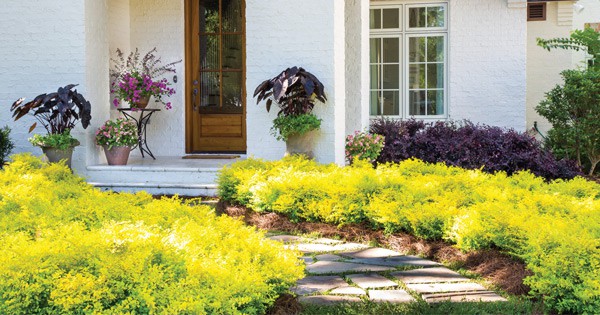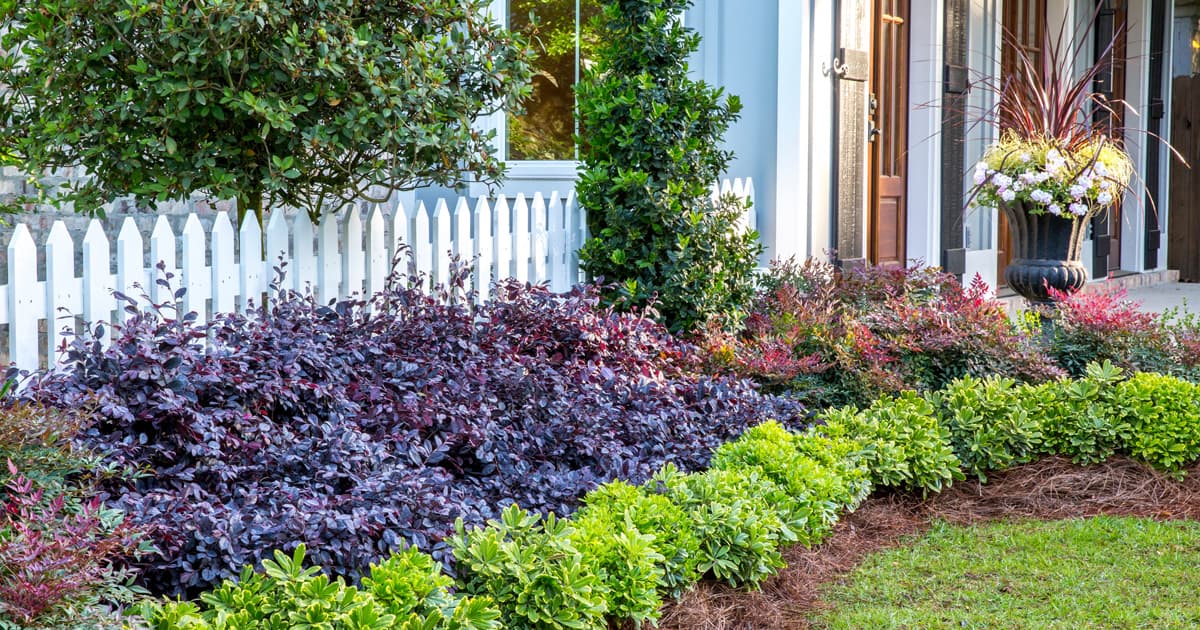While the average garden is shrinking in size, it does not have to look or feel small. A few simple tricks can create the illusion of depth, making a garden appear larger than life. Wielding the tools of color and texture, gardeners can define and transform small spaces into landscapes with impact. Here’s how to get started:
Adding color

To maximize depth, we must take advantage of the way colors interact with the human eye. Cool colors, such as green, blue and purple, are calming and make objects look smaller and farther away. Since these colors tend to recede from view, they should be situated toward the back of a planting. Here, they will add visual depth where very little actual space exists.
Warm colors, like red, orange and yellow, give a feeling of energy and excitement. They can make an object appear larger and closer. When placed at the middle and front of a garden, warm colors make the planting move toward the viewer.
Together, cool and warm colors create an illusion of depth, with the cool colors drawing away from the viewer and warm colors jumping forward. In this way, the cool colors work as a backdrop to showy, warm colors.
As we select plants for color in the garden, foliage becomes key, as it provides season-long – or if evergreen, yearlong – color in the garden. Focus on foliage rather than flowers when selecting cool-colored plants for the back of a bed.
Utilizing texture

We can also draw upon the qualities of texture to create depth in a planting and to make spaces look larger. Texture refers to the surface qualities of an object that can be seen or felt. In garden design, we are primarily concerned with the visual texture of plants and hardscape materials. While plants offer texture through bark, flowers and fruits, the dominant source of texture is foliage.
Foliage texture ranges from fine to medium to coarse (sometimes called bold). Medium textures dominate the plant world and the landscape. You can create interest and depth in a planting by accenting medium-textured plants with fine and coarse texture. Look for contrasting textures to create the most drama.
Fine-textured plants have relatively small leaves and a light, airy feeling. They visually recede from the viewer into the background, similar to cool colors. Fine textures make a garden appear larger.
In contrast, coarse-textured plants have large leaves. They are bold and visually dominant. A garden with primarily course-textured foliage will appear smaller, as all of those bold forms compete for attention. However, when used sparingly, coarse textures can complement fine textures. This is achieved by placing fine textures toward the back of a planting, and a few coarse, bold plants closer to the center or front to make the garden stretch.
Putting it all together

To create maximum depth, account for both color and texture in your garden design. Fine textures and cool colors move away from the eye. Use plants with these characteristics as a backdrop. Examples from the Southern Living® Plant Collection include Purple Diamond® Loropetalum, Red Diamond™ Compact Loropetalum, ‘Soft Caress’ Mahonia, Flirt™ Nandina and Obsession™ Nandina.
Next, add layers of plants with warm colors or bold foliage to visually move the garden toward the viewer. Try ‘Sunshine’ Ligustrum, flanked by the coarse textures of ‘Poquito’ Banana and Evercolor® ‘Everillo’ Carex. Then, to unify the design, tuck in a few green-foliaged plants and top it off with flowering bulbs and perennials to provide pops of color.






